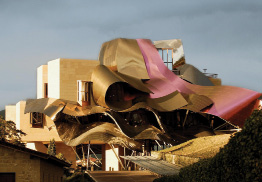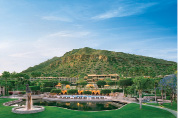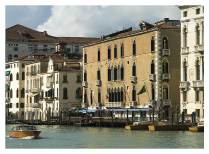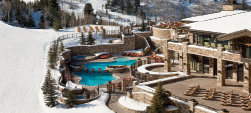- Home
- Media Kit
- Current Issue
- Past Issues
- Ad Specs-Submission
- Ad Print Settings
- Reprints (PDF)
- Photo Specifications (PDF)
- Contact Us

![]()
ONLINE

“Truth in Luxury”
Editors’ Note
Paul James was appointed to his current post in 2008. James has more than 20 years’ experience in hospitality, serving most recently as Starwood’s Regional Director of Sales & Marketing, NW Europe.
Company Brief
St. Regis Hotels and Resorts (www.starwoodhotels.com) is the legendary hotel brand committed to excellence and bespoke service at the best addresses in the world. The Luxury Collection (www.luxurycollection.com) boasts one-of-a-kind destinations and indigenous experiences designed for the global explorer. St. Regis and The Luxury Collection have successfully debuted properties in new markets including Atlanta, Indonesia, Mexico, Moscow, Peru, and Scotland. Over the next five years, they will continue their expansion with the opening of properties in Abu Dhabi, Bermuda, Buenos Aires, Cairo, China, Japan, Jordan, and Peru.
For the luxury segment of hospitality, were you surprised at how severe the downturn was and where do you see the luxury market today?

The St. Regis Osaka
Not only was it a deep fall but from the highest place the industry had ever been. Across the industry, we had seen additional rooms coming into new markets. We could not have predicted that and, similarly, we could not have predicted the resilience of certain markets within the luxury segment.
On the commercial side, there were challenges where major corporations were trying to determine the right direction for their businesses, while they were also enduring some external pressures from the broader social market to reevaluate how they were spending their money.
Those hotels that were skewed to the corporate consumer and to the group market felt the impact more deeply than anyone else. The leisure customers came back in September 2009 with a vengeance.

Hotel Marqués de Riscal, a Luxury Collection Hotel
Most luxury hoteliers felt that if they stayed true to looking after the needs of the individual and recognizing how important this particular stay was to their customer, albeit truncated, they would see the value in that and would come back.
Across the industry, everybody engaged in an effective look at what value means as it relates to price and to added services. In the luxury space, we added additional value such as an extra night free for limited stays at The Luxury Collection and St. Regis properties, which followed the luxury-for-less quotient in the marketplace. However, we also made sure that we weren’t cutting service. We were able to make changes to the way we operate the back of house to be more efficient and leverage the purchasing platform of Starwood to keep our costs under control without impacting the touch point of the customer.
In urban locations with a heavily transient single traveler, and in some of the smaller resort hotels, it was comforting to see that business return relatively quickly, and that, on the occupancy front, we were getting the customers in again.

The Phoenician, a Luxury Collection Hotel
The commercial side has been more complicated because it varies by location. The key urban centers around the world – New York, Paris, London, Tokyo, Beijing, and Shanghai – have seen a strong return, which is due, in part, to Starwood’s strong local position. We have been in China since the early ’80s and Brazil since the early ’70s, and we have good brand recognition in those expanding markets. The Luxury Collection also started in India in 1994.
We were well positioned to take advantage of the recovery. We spent most of 2007 getting back to basics and honing our definition of what St. Regis and The Luxury Collection stood for. So in 2008, we were in a good place to use that environment as a stress test to make sure we were offering the customer what they valued and not just offering things we thought were good marketing ideas.
Is it critical in the luxury segment to offer that true spa experience and are you partnering in that area?
A spa is a price of entry. We had worked with what was then our in-house company, Bliss World, to take their Parisian skincare brand as a basis for our St. Regis approach to luxury and then created a unique space called Remède Spa, which are now in 98 percent of our hotels.

Hotel Gritti Palace, a Luxury Collection Hotel
We sold Bliss World at the end of 2009. Remède is exclusive to St. Regis and it is all about gender-neutral, health-related individual service.
In Osaka and Tibet, we just launched an in-house brand called Iridium, which is named after the original Iridium room in St. Regis New York.
Our small boutique hotels will have spa suites with Iridium. They feature self-contained units where you consult with a therapist who creates the program you want.

The St. Regis Deer Valley
Is it challenging to define what luxury is and has that word lost some of its meaning?
It was tarnished badly by being applied to things that were not true luxury, but the conversation about what luxury means has been evolving.
Uber-luxury brands are collecting the term and moving it back to their premium product. It relates to an idea that we’re tentatively calling “truth in luxury.”
People are beginning to recognize that there are tiers in luxury and there is a premium luxury space that can’t be confused with the accessible luxury space. That does not diminish the value of a luxury brand, because this is being projected out to an international luxury audience, which is in a position to become very wealthy and move into a super luxury space, and to make choices about where they wish to go to have an exceptional stay.
But the consumers quickly understand genuine luxury versus simply well built. The value of a luxury hotel comes down to what happens when you get inside it, that service transition.•